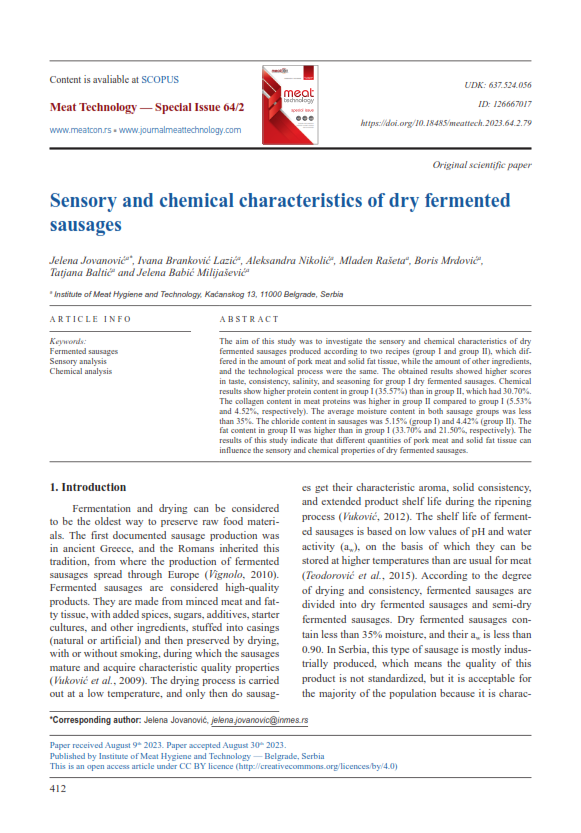Sensory and chemical characteristics of dry fermented sausages
Abstract
The aim of this study was to investigate the sensory and chemical characteristics of dry fermented sausages produced according to two recipes (group I and group II), which differed in the amount of pork meat and solid fat tissue, while the amount of other ingredients, and the technological process were the same. The obtained results showed higher scores in taste, consistency, salinity, and seasoning for group I dry fermented sausages. Chemical results show higher protein content in group I (35.57%) than in group II, which had 30.70%. The collagen content in meat proteins was higher in group II compared to group I (5.53% and 4.52%, respectively). The average moisture content in both sausage groups was less than 35%. The chloride content in sausages was 5.15% (group I) and 4.42% (group II). The fat content in group II was higher than in group I (33.70% and 21.50%, respectively). The results of this study indicate that different quantities of pork meat and solid fat tissue can influence the sensory and chemical properties of dry fermented sausages.





